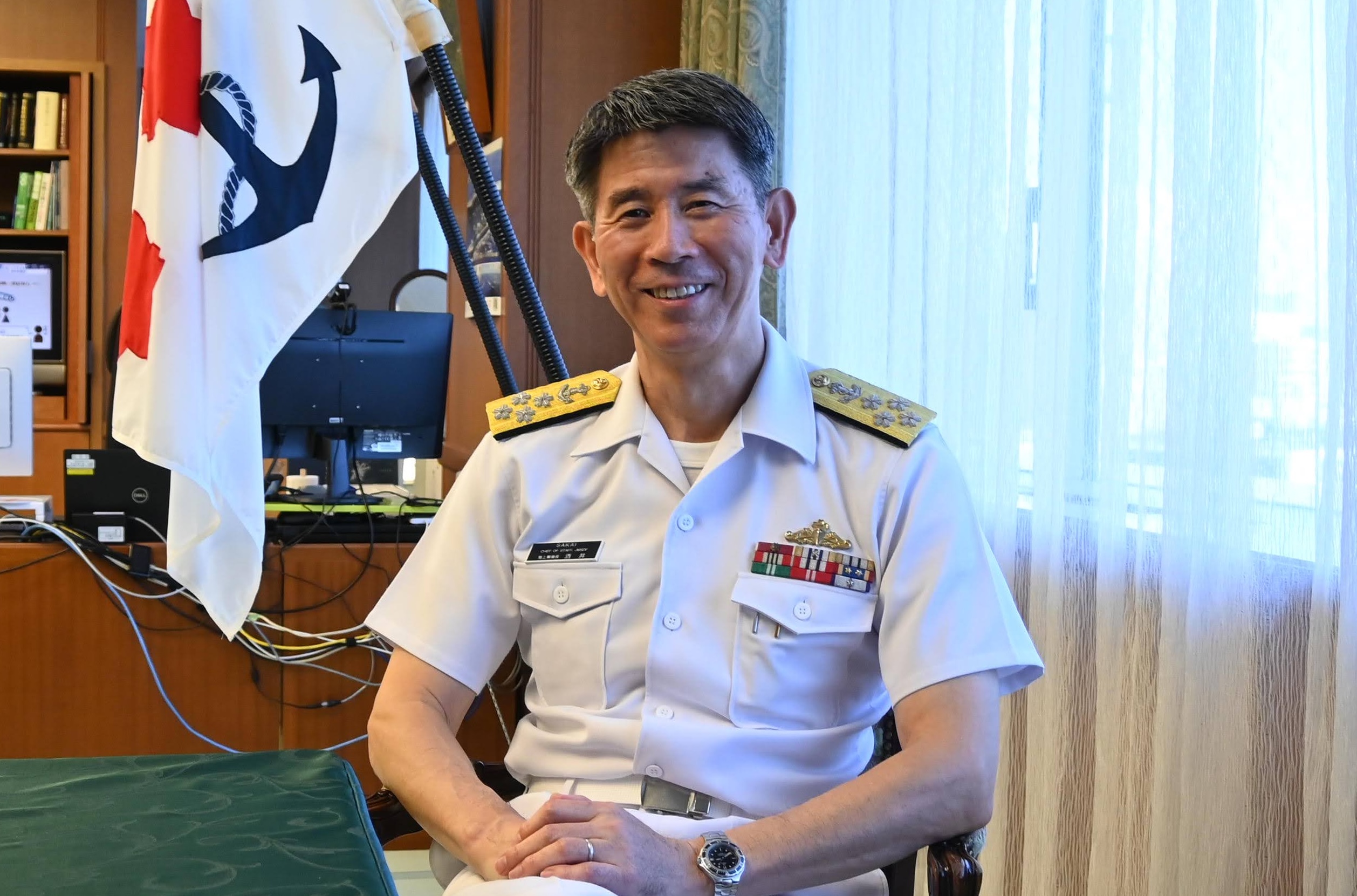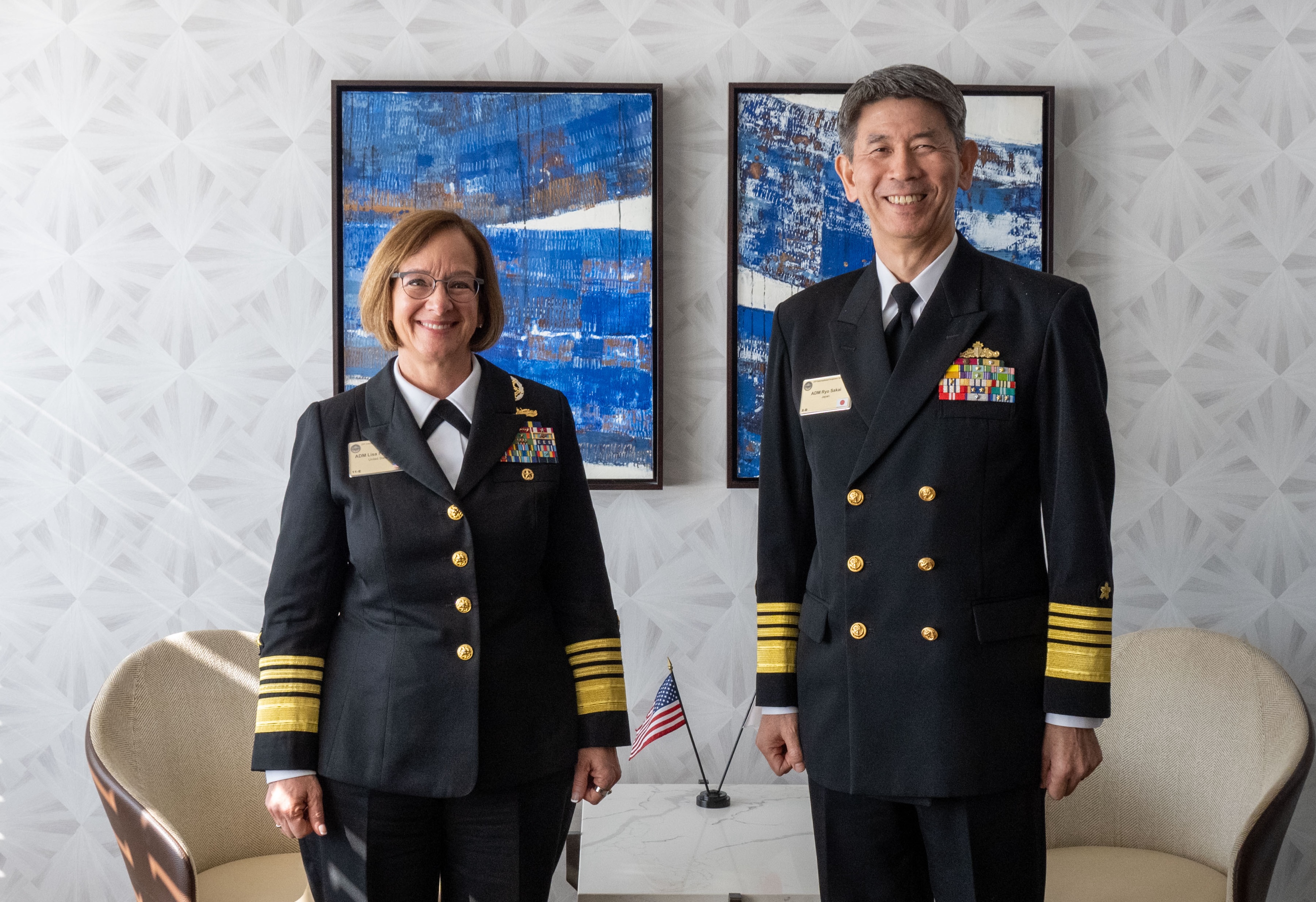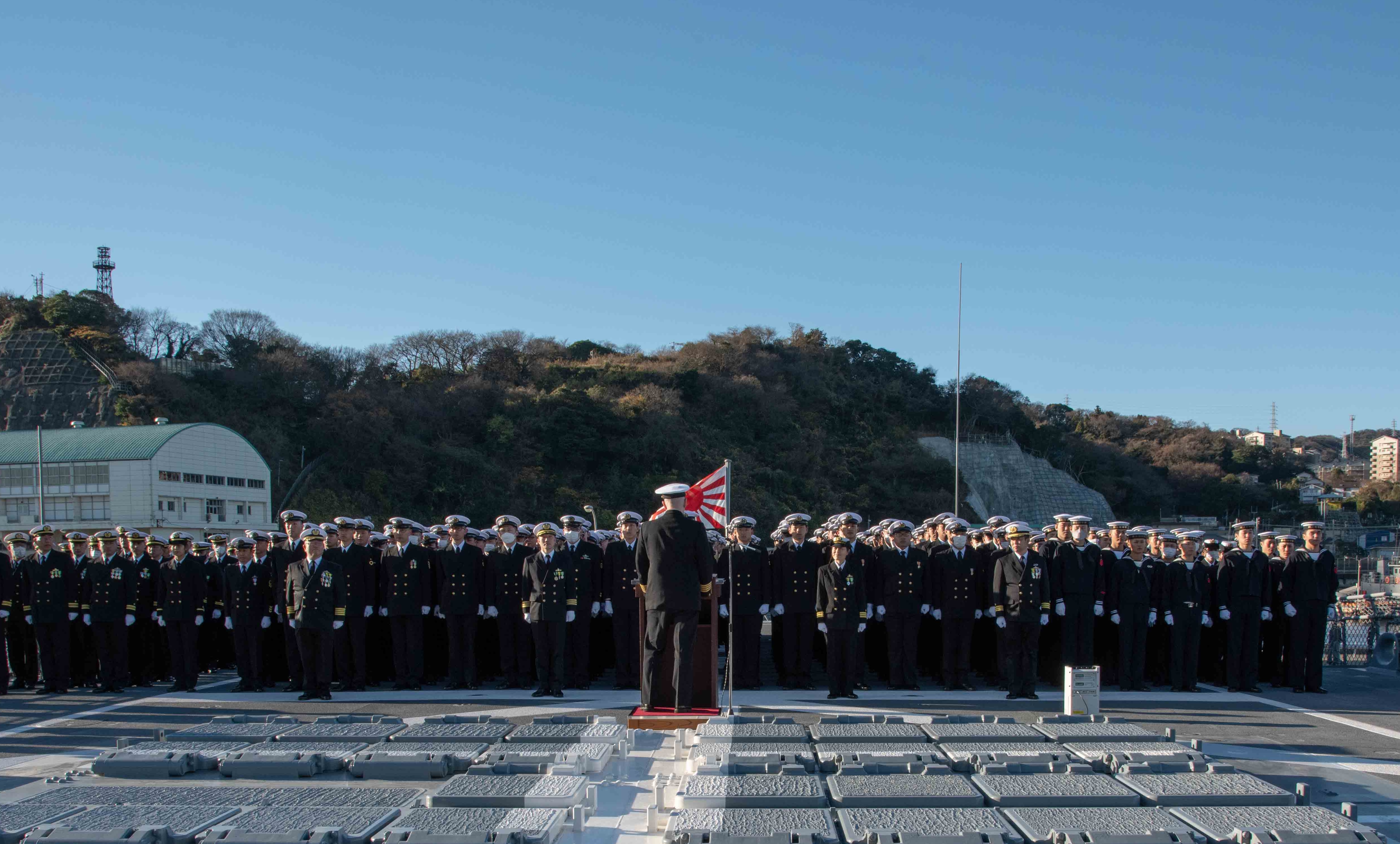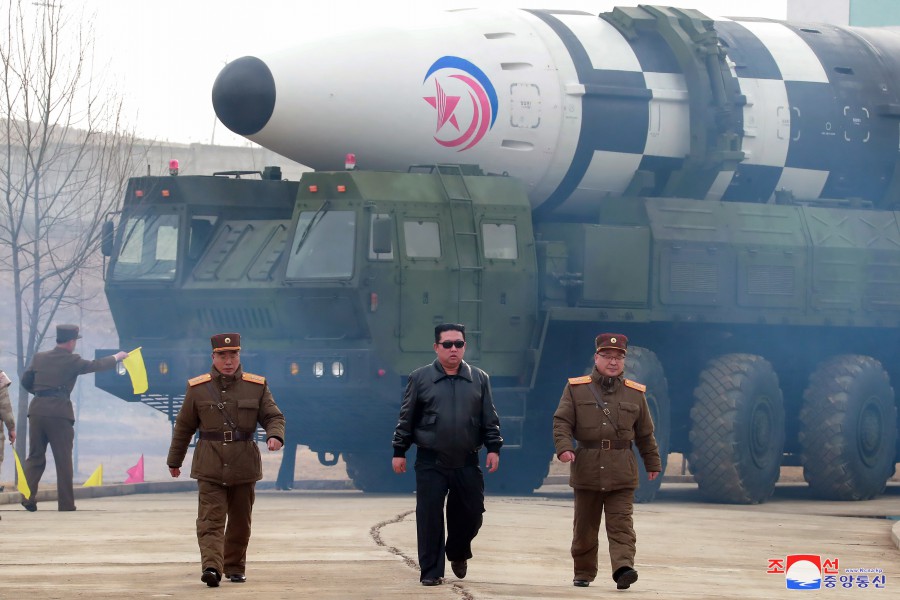
TOKYO – The Japan Maritime Self-Defense Force has emerged as a key partner for the United States Navy, as the two nations seek to counter an increasingly aggressive China in the Western Pacific.
U.S. officials have repeatedly pointed to the relationship with Japan as a crucial part of the Pentagon’s strategy to confront China’s actions in the region.
For almost two years, Chief of the Maritime Staff Adm. Ryo Sakai has led the JMSDF, as the Japanese government pursues a historic increase to defense spending, coinciding with ongoing aggression from China and Russia in the East China Sea.
Sakai sat down with USNI News for a wide-ranging interview at his office in Tokyo this summer to discuss topics ranging from collaborating with the U.S. sea services to how the Japan Self-Defense Force is preparing to integrate the fighter-capable destroyers into its fleet.
“The interoperability between [the] JMSDF and the U.S. Navy is a kind of centerpiece, or backbone, of the combat operations between [the] Self-Defense Forces and U.S. forces,” Sakai told USNI News.
Working with the U.S.

U.S. officials often use buzzwords like interoperability and interchangeability to describe how the Defense Department wants to work with countries like Japan on the surface, in the air and under the sea.
Japan, for example, operates many of the same systems as the U.S., like Aegis-capable guided-missile destroyers and the F-35B Lighting II Joint Strike Fighter.
Without interoperability between the U.S. and Japanese navies, combined operations between the two countries would not be possible, Sakai told USNI News.
“It takes a lot of time and needs a huge budget. And it also requires, on our side, to have some access to U.S. information, technology,” he said.
To that end, the U.S. and Japan must determine how best to conduct combined logistics in the event of a conflict and how to work around classifications that may prevent the countries from sharing information with each other, Sakai said.
Pursuing interoperability between the U.S. and Japan will require investments in people and in resources, the chief of the Maritime Staff said.
Bigger Budgets Mean More People

At the end of the summer, Japan’s Ministry of Defense unveiled a historic budget request, seeking $53 billion in Fiscal Year 2024 to buy more Aegis-equipped destroyers, new frigates and more fighters. In December, the Cabinet of Japan approved the budget, which is the largest one to date.
During the interview at his office over the summer, Sakai said the Ministry of Defense plans to spend more on research and development in the next five years, particularly on unmanned vehicles and counter-strike capabilities.
But building more platforms and weapons requires people to operate those systems. Japan faces a unique recruiting challenge. According to the World Bank, Japan’s population has been decreasing each year for the last decade and dropped by half a million people from 2021 to 2022.
“Because Japan’s population is shrinking … the [recruitment] is a kind of competition between [the] private sector and government sector,” Sakai said.
To address this, Japan increased the maximum age for recruitment across the services from 28 to 33, and raised the retirement age by one year from 56 to 57. Other potential initiatives – like pay increases or flexible working environments to keep up with the private sector – could be on the table in the future.
Due to the myriad threats Japan faces from North Korea’s missile firings, as well as Russia and China’s consistent circling of the Japanese islands, Sakai said he must be mindful of the high operational tempo to prevent his sailors from getting burned out.
Regional Threats

With North Korea to its northwest and China and Russia operating around the Japanese islands, Japan faces threats from multiple regional actors.
In recent years, Japan says missiles from both North Korea and China have landed in Japan’s exclusive economic zone.
“We are continuously conducting joint and bilateral [integrated air and missile defense] and BMD exercises with the U.S. Navy, and including the Japan Air Self-Defense Force and other services,” Sakai said.
In addition to North Korea’s ongoing missile testing, the JSDF is frequently scrambling in response to Russian and Chinese training flights and monitoring Russian and Chinese ships that are circling the Japanese islands. Russia and China have also consistently performed joint exercises in the Sea of Japan.
“Although their tactical level is still basic … we can say that they’re …building a closer and closer relationship and their combined operations will be in the future I’m sure upgrades, step by step. So that’s my concern,” Sakai said of Russia’s and China’s joint operations.
While the JMSDF has not experienced the type of harassment from the People’s Liberation Army Navy that the U.S. has, Sakai said he expects it could happen near the Senkaku Islands or near Taiwan.
“[That] kind of harassment – this is my estimation – was not conducted at the discretion of onsite commanders or pilots, but those actions surely were directed from their higher headquarters. It’s organized harassment,” Sakai said of interactions like June when a Chinese destroyer cut across the bow of USS Chung Hoon (DDG-93) in the Taiwan Strait.
It’s an assessment the U.S. Defense Department has also made. The aggression U.S. forces have seen in the air as “a centralized, concerted campaign to perform these risky behaviors in order to coerce a change in lawful U.S. operational activity, and that of U.S. Allies and partners,” according to the Pentagon’s annual military report on China.
“If we encounter such harassment, organized harassment, in the future, we must be prepared and be professional not to give them any excuse to – if we reacted unprofessionally, they would take that unprofessional response from our side as some excuse to blame Japan,” Sakai said.
F-35B Integration

The JMSDF is in the middle of a modification initiative for two of its helicopter destroyers so they can accommodate the Japan Air Self-Defense Force’s F-35B. Destroyer helicopter carrier JS Izumo (DDH-183) finished its first phase of modifications – in which it received a new heat-resistant deck coating – and will head to the East Coast next year for F-35B trials.
Meanwhile, JS Kaga (DDH-184) set sail on Nov. 13 for trials after receiving its modifications, including the new deck coating and a reshaping of the ship’s bow to better accommodate the takeoff and landing of the fighters, The Asahi Shimbun recently reported.
“The challenge is the operational capability of Izumo and Kaga is not the same as the U.S. carrier,” Sakai told USNI News. “The number of planes they can have onboard is limited and also the command and control of fighters, and amount of ammo.”
The JMSDF does not expect to operate the helicopter destroyer like a U.S. carrier, even once the F-35Bs are aboard. But the exact mission the destroyers will perform with the fighters is still under discussion, as the JMSDF determines the future concept of the ships, Sakai told USNI News.





